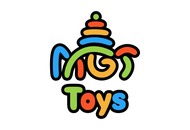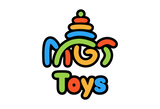Early childhood development is all so much more than having fun. Toys are how children form the ways in which they view and interact with the world. One of the best learning toys out there are busy boards and puzzles—deceptively simple but incredibly powerful tools that promote sensory discovery, cognitive development, and fine motor skills for young children. For parents wanting to nurture their child's development while inspiring creativity and wonder, these Montessori-designed wooden toys are a great investment.
Let's explore the ways in which busy boards and puzzles can contribute to sensory development and why these should be an essential part of your child's playtime.
Building Hand-Eye Coordination and Fine Motor Skills
Busy boards and puzzles are excellent for building hand-eye coordination and fine motor skills. As children manipulate puzzle pieces or latches, buttons, and sliders on a busy board, they exercise the small hand muscles of fingers and hands. It strengthens their grip as well as builds hand muscle control, which will come in handy with activities such as writing, drawing, and even tying shoelaces.
For example, fitting a puzzle piece into a puzzle calls for concentration and attention. This very ordinary act teaches children how to associate visual input with physical output—a skill basic to many endeavors.
Fostering Cognitive Growth and Problem-Solving Ability
Every time a child plays with a puzzle or works on a busy board, they are exercising their brain. These games test children to be critical thinkers, find patterns, and problem-solve. From attempting to get shapes to fit, sizes to sort, or the latch to open, these games challenge children to think logically and be mindful of space.
Furthermore, puzzles also employ the use of numbers, letters, and color and thus serve as ideal tools for early math concepts acquisition, letter recognition, and color discovery. A child can be instructed to count while putting numbered pieces in order or learn letter recognition by solving an alphabet puzzle. These self-correcting exercises help kids to learn by trial and error while at the same time building confidence and endurance.
Building Sensory Discovery and Tactile Learning
Busy boards are particularly a sensory treat. Smooth wood, textured fabrics, and movable objects create a diversity of tactile sensations that play to a child's sense of touch. Sensory discovery is critical for young children because it allows them to make sense of their environment and learn practical living skills.
For instance, running a zipper up and down or switching a switch on an activity board imparts cause-and-effect to kids. They find out that the things they do have consequences, laying the groundwork for even more abstract thinking as they grow older.
Encouraging Emotional Expression and Social Interaction
Playtime is not only for individual growth—it's also for social interaction and emotional expression. Busy boards and puzzles develop patience and taking turns when played with others, which helps children acquire important social skills. They learn to share, cooperate, and communicate with other people.
Besides, pretend play and imaginative play naturally happen as part of these activities. A child can pretend that his busy board is a control panel for a spaceship or do puzzle pieces to create a story. This type of creative thinking not only enables more emotional expression but also builds curiosity and amazement.
Montessori-Inspired and Eco-Friendly
Among the reasons puzzles and busy boards excel is because they are Montessori-oriented. The games are designed to be hands-on, self-directed, and founded on practical life concepts, thus ideal for promoting confidence and independence in children.
The majority of puzzles and busy boards consist of recyclable, non-toxic materials that are not harmful to children and are also eco-friendly. Wooden learning toys, particularly, are durable and timeless, offering an eco-friendly choice over plastic toys that are largely discarded in landfill sites.
Practical Tips for Parents
To maximize the usage of puzzles and busy boards, use these tips:
Choose Age-Appropriate Toys: Choose puzzles and busy boards appropriate to your child's age. Young children may require simpler designs with bigger pieces, while older children can manage harder ones.
Include Learning Themes: Use toys featuring numbers, letters, shapes, and colors to aid in early literacy and math skills.
Create a Special Play Zone: Allocate a quiet, distraction-free area where your child has the ability to focus on their activities. This enables them to enhance concentration and build up their memory.
Play with Your Child: Independent play is essential, but playing together with your child can benefit them too. Use the opportunity to demonstrate problem-solving skills or introduce new vocabulary.
Rotate Toys: To keep things fresh and exciting, rotate puzzles and busy boards periodically. This prevents boredom and keeps your child engaged.
A World of Learning Through Play
Puzzles and busy boards are more than just toys—they’re gateways to a world of learning and discovery. By incorporating these tools into your child’s daily routine, you’re nurturing their fine and gross motor skills, cognitive abilities, and emotional well-being.
As parents, caregivers, and educators, our responsibility is to provide children with the means to explore, create, and grow. With their unlimited capacity for sensory exploration, problem-solving, and creativity thinking, puzzles and busy boards are a wonderful means to help your child become capable, confident, and inquiring.














